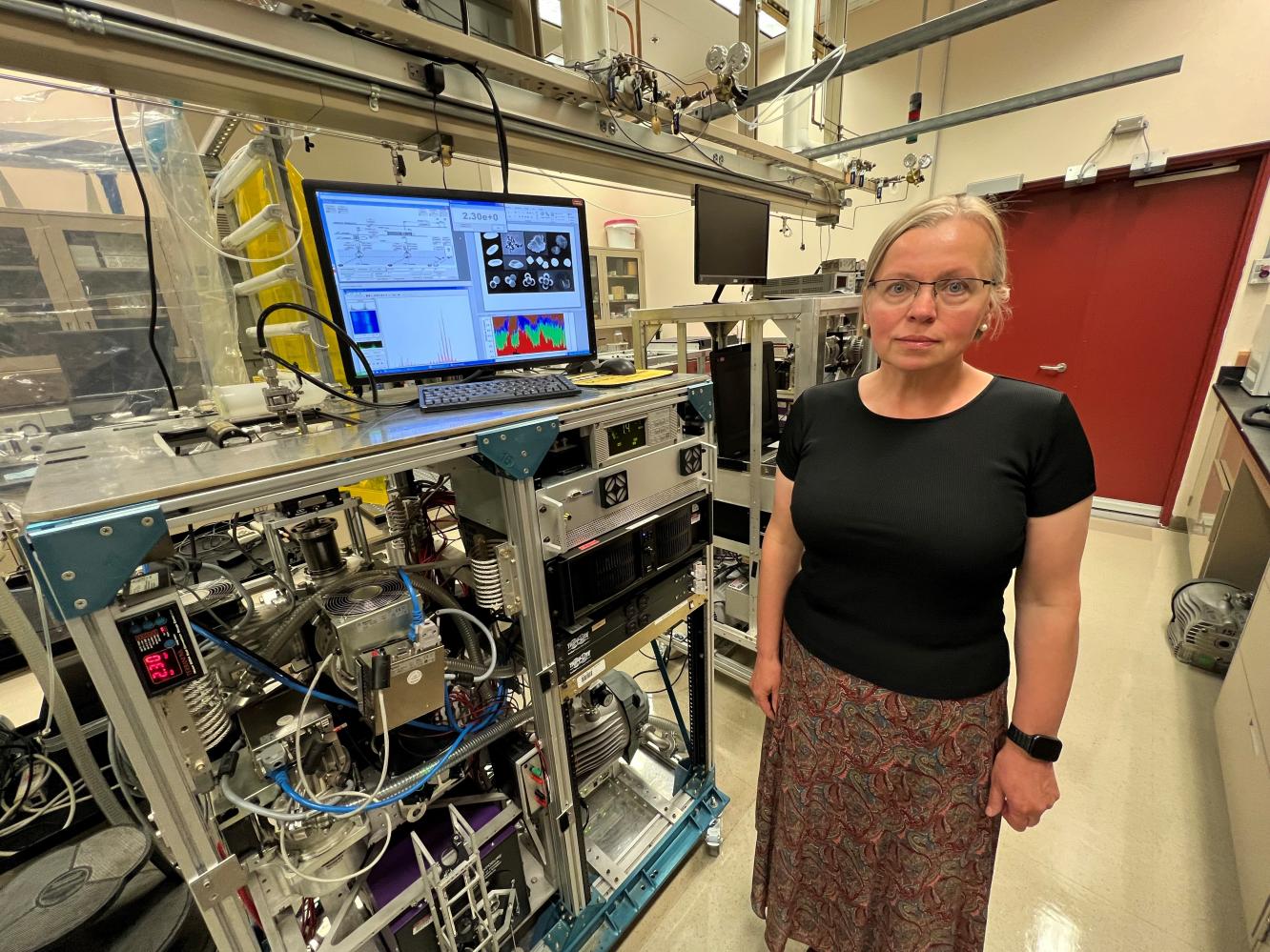EMSL Users Receive Best Paper Award for New Approach Characterizing Single Particles
New method allows characterization of multiple relevant particle properties with laser ablation inductively coupled plasma mass spectrometry in real-time

A paper led by PNNL chemist Alla Zelenyuk and David Koppenaal, retired PNNL chief technology officer, recently earned an award for best paper from Spectrochimica Acta Part B regarding a new approach for detailed characterization of individual particles using instruments at EMSL. (Photo by Maegan Murray | Pacific Northwest National Laboratory.)
A paper highlighting a new approach for detailed characterization of individual particles using instruments at the Environmental Molecular Sciences Laboratory (EMSL) was recently named best paper among those published in 2021 in Spectrochimica Acta Part B.
The paper, titled “Real-time characterization of particles produced by laser ablation for analysis by inductively coupled plasma mass spectrometry,” was led by Alla Zelenyuk, a chemist at Pacific Northwest National Laboratory (PNNL), and David Koppenaal, retired PNNL chief technology officer.
Under the right conditions, laser ablation (LA) inductively coupled plasma mass spectrometry (ICPMS) is a powerful chemical analysis technique, Zelenyuk said. Through the process, a laser beam is focused on a solid surface, causing the release of a plume of particles, gases, and ions. When the plume begins to cool, nanoparticles form and aggregate together, forming large particles with complex shapes. To be chemically analyzed, a carrier gas sweeps the particles into an ICPMS, which details the particles’ composition. With the combined process, however, questions have remained about how the laser settings affect the generated particles and how particle properties relate to ICPMS signals.
Prior studies have indicated particle “size” to be the most important component in obtaining quantitative results with LA-ICPMS. However, the team’s study revealed that due to the LA-generated particles’ complex shapes, that is not always the case. Particle “size” is typically determined by measuring its diameter, often requiring a more spherical shape. When it comes to particles with complex shapes, however, it is impossible to characterize them using a single parameter such as a diameter due to their shape.
For their research, the team introduced a new approach for real-time multidimensional characterization of LA-generated particles that utilizes a one-of-a-kind single particle mass spectrometer, miniSPLAT. The method allows them to measure multiple relevant particle properties in real-time, including particle mass, composition, shape, number concentrations, mobility, and vacuum aerodynamic diameters, as well as detailed morphology.
“We used our single-particle characterization techniques to address an old problem in a new way,” Zelenyuk said. “In the future, this approach could be extended to other samples or systems to optimize LA operating conditions, tailor the properties of particulates, and improve the quantification and sensitivity of ICPMS measurements.”
Coinciding with their award for best paper, the team is invited to present at a symposium honoring Spectrochimica Acta Part B awardees at the SciX 2022 conference in October. Koppenaal will present the team’s research as part of a special session.
To learn more about the team’s research, watch Zelenyuk’s presentation on characterizing atmospheric aerosols as part of the EMSL LEARN webinar series.

